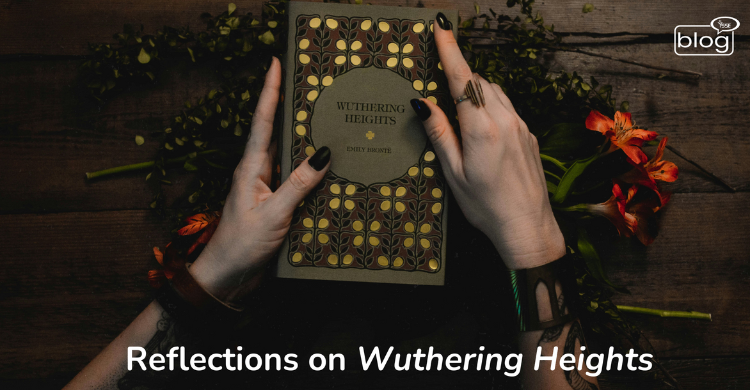Emily Brontë’s Wuthering Heights gives a broader scale to understand human relations and its complexities.
The story revolves around the complex nature of human passion, power, and the consequences of choices. The story is a combination of harsh nature and human love that makes readers experience a supernatural journey. The intensity between Catherine and Heathcliff makes readers reflect on their understanding of relationships.
A Love that Haunts
Wuthering Heights is an unusual love story. It is unusual in its appeal to make readers romanticize love. Rather, it makes the readers contemplate love’s complexities. Their love is uncontrolled and unexpected, like the wild moors; it is neither sweet nor soft.
This intensity is summed up in Catherine’s remark, “I am Heathcliff.” They are two parts of the same soul, not two lovers. However, there is no contentment or serenity in this love. Rather, it devours them and everyone in the area. Their flaws are what makes their love captivating. Their love story is messy, cruel, and often mysterious, in contrast to the tidy ones we frequently come across.
It’s the kind of love that makes one wonder if love may be self-serving. Can it do as much harm as good?
The Enigma of Heathcliff
Heathcliff, one of the protagonists is not a regular romantic hero. Readers may struggle to fit him in the hero category. He is not a villain either. He is an anti-hero who lacked love from his childhood to death. His life is full of difficulties and sorrows. From the beginning as an orphan to his journey to power, he is not regarded by his surroundings. He is someone you want to understand rather than someone you support or oppose. He is defined by his passion for Catherine, but it also motivates him to destroy the lives of others. It’s difficult not to feel his suffering, even while his revenge against the Earnshaws and Lintons is frightening. He makes readers consider their own potential for forgiveness and vengeance by representing the darkest aspects of humanity and love.
The Role of Nature
The story of Wuthering Heights is greatly influenced by the setting. The uncontrolled passions and turbulence of the people who live there are reflected in the windswept, wild moors, which are almost a character in themselves.
The harshness of the surroundings and the strength of the emotions are constantly in conflict in the book. As children, Catherine and Heathcliff appear to be a part of the moors, roaming freely and uncontrolled. The moors later represent loneliness and longing, reflecting the unstable relationships in the narrative.
The concept of nature vs society, chaos versus order, is further emphasized by the contrast between Wuthering Heights and Thrushcross Grange.
A Tale of Two Generations
Wuthering Heights’ dual narrative structure, which crosses two generations, is what makes it so captivating. Isabella, Edgar, Heathcliff, Catherine, and other senior characters’ decisions have a lasting impact on the lives of the younger characters. While carrying the burden of the past, the second generation represented by Linton, Cathy, and Hareton also provides an appearance of hope.
The prospect of ending the cycle of revenge is hinted at both Hareton’s metamorphosis and his bond with Cathy. Their relationship is based on development and understanding, in contrast to Heathcliff and Catherine’s toxic love, and it provides a more tender and hopeful ending to the tale.
Wuthering Heights is a challenging book to read since it is passionate and occasionally unsettling. However, that is precisely what makes it memorable. The darker facets of humanity and love are not avoided. In fact, this novel challenges the readers to reflect on their feelings.
It is a must-read to understand the dealings of human minds. It shows the complexities of mankind, love, and society. It gives an after-effect that stays with the readers for a long time.
To read these types of blogs, please visit here.
Writer
Mariam Mardia,
Intern, Content Writing Department
Youth School for Social Entrepreneurs

